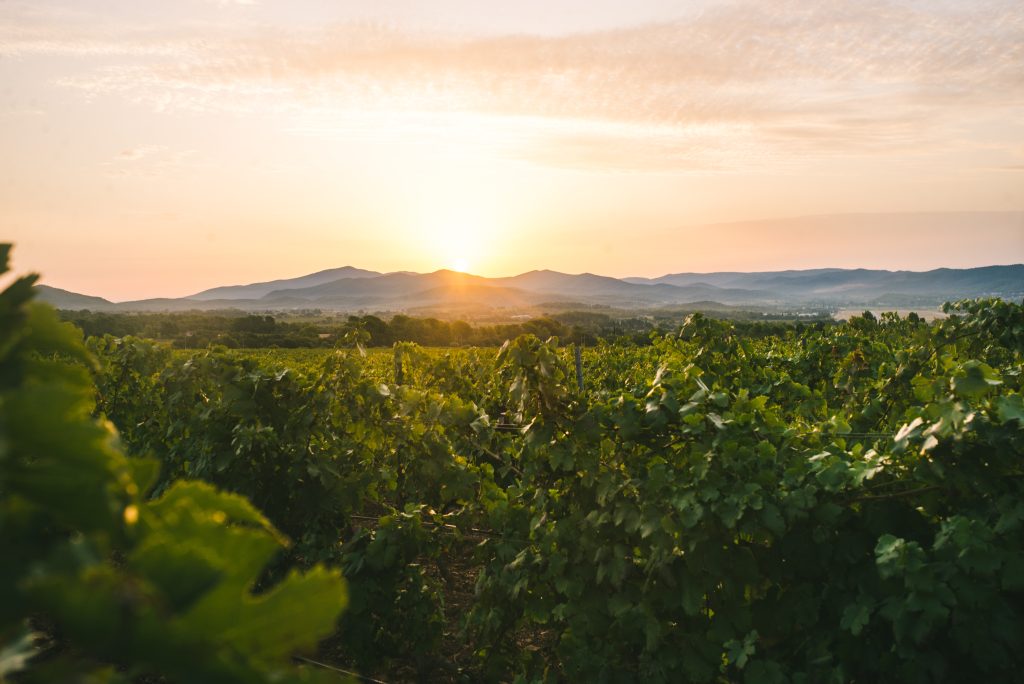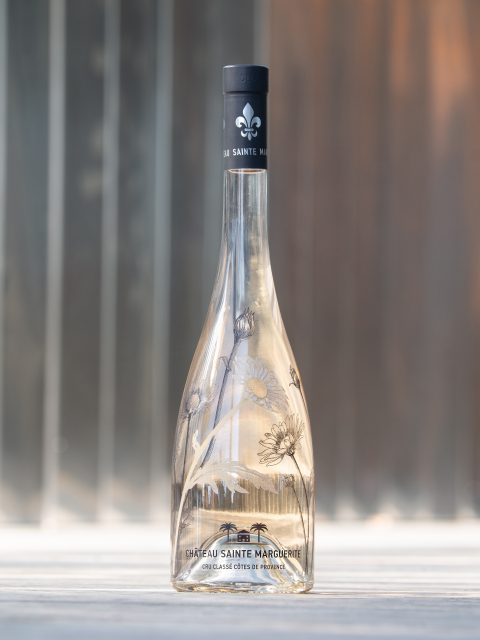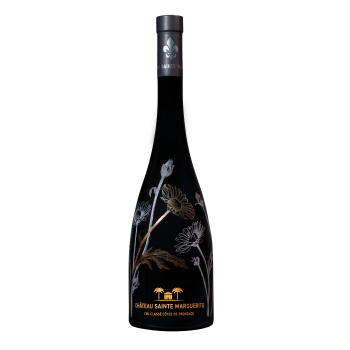Life beyond rosé: Sainte Marguerite’s new Provence range
By Richard WoodardProvence rosé specialist Château Sainte Marguerite has unveiled an ambitiously priced line-up of three high-end wines, its first new range since being acquired by Pernod Ricard in 2022 – and CEO Olivier Fayard is just as keen to talk about the white and the red as he is the rosé. Richard Woodard reports.

Provence rosé has been arguably the greatest wine industry success story of the past decade, its elegant bottles and pale pink hues making household names of the likes of Whispering Angel, Château d’Esclans and Miraval – and spawning a host of me-too takes on the style from Argentina to Australia.
As demand – and prices – have soared, properties have changed hands, with Moët Hennessy snapping up d’Esclans, Minuty and Galoupet – and Pernod Ricard taking a controlling stake in Château Sainte Marguerite in 2022.
Two of the big questions following the Pernod acquisition revolved around the potential to create new ranges under the Sainte Marguerite banner, and whether the new owner would make more – or less – of the property’s white and red wines.
The new Marguerites en Provence collection answers both questions. As with the Fantastique range created five years ago, there’s a rosé (2023 vintage, 15,000 bottles), a white (2022; 4,000 bottles) and a red (2021, less than 15,000 bottles), but this time the pricing is rather more ambitious, spanning €55 (rosé) to €65 (red and white). Compare that to Fantastique: €30 (rosé) to €38 (red and white).

The aim of the new collection is to “discover a new taste, a new technique, a new feeling for our wine”, says Sainte Marguerite CEO and winemaker (alongside his brother Enzo) Olivier Fayard. Tasting the new wines alongside Fantastique, the most notable contrast is the step up in aromatic intensity – something which Fayard ascribes to a combination of factors, including terroir, planting material, experimental winemaking techniques and maturation.
Where Fantastique plays upon two areas – the coastal location of La Londe-les-Maures around the winery, plus Pierrefeu-du-Var some 22km to the northwest – Marguerites is firmly focused on the predominantly schistous, clay-free soils of La Londe.
Here the vineyards were largely overhauled around 20 years ago and replanted with massal selections, using the skills of nurseryman Lilian Bérillon, an outspoken and acclaimed expert in the field who has numbered Jacques Selosse, Louis Roederer, JL Chave and Pingus among his many clients.
According to Fayard, this benefits all of the new wines. He contrasts the character of the ‘old’ Cinsault used in the rosé blend (as with Fantastique, alongside Grenache and Rolle/Vermentino) with the newer planting material found throughout the region. “With the ‘new’ Cinsault, the fruit is bigger, the skin is a different thickness,” he says. “The old Cinsault has much smaller fruit and more intensity.”
He also believes that there’s a common misconception that “you don’t need” to use older vines to make a top rosé. “When you make a massal selection, immediately your quality is higher,” he claims. As a result of discussions with Bérillon, two vineyard parcels with “very, very old” Grenache and Cinsault were used for the rosé blend.
Partner Content
If there is a standout among the three new wines, it is the white, which showcases the potential of Vermentino, given the right location, soil and planting material. Describing the variety as “a Ligurian grape” in its span across the South of France, the Italian coast and northern Corsica, Fayard explains that the selection was made from really old plants in Corsica some 20 years ago.
Where the Fantastique white spends seven months in barrel, with a 50/50 mix of new and used oak, the Marguerites white is matured for 10 months in wholly new wood – but very fine-grained barrels, sourced (as with the red) from Ermitage and Baron, including the latter’s ‘umami’ cask type. “After one to two years, you lose the wood and you keep the texture,” Fayard explains.
White wine accounts for less than 10% of Côtes de Provence wine production, but demand easily outstrips this, he adds. “Everybody asks for whites in Provence. It’s a big success in France when you look at the quality and the price, so a lot of people in the South of France area are now looking for white wine.”

Meanwhile, the red (a Syrah/Grenache blend) sources grapes from higher up on La Londe’s schistous slopes, using parcels within 1km of the sea (La Jeannette) and further to the west (Mon Redon).
The result reflects Fayard’s love of the great wines of the northern Rhône, and Hermitage and Côte-Rôtie in particular. “If you want a wine to stay 20 years in bottle, the body of the Grenache provides that base,” he says. “Syrah is perfect for the fruit – we don’t use Syrah for the rosé because it’s much better for the reds.”
All three wines also benefit from Enzo and Olivier Fayard’s continual pursuit of experimental techniques in the winery, which play up the wines’ inherent aromatic intensity. Olivier is reluctant to divulge too many details here, save to say that certain “technical adjustments” result in changes to the wines’ flavour, intensity and texture. “The pressing and the maceration are really, really different,” he says.
Sainte Marguerite may now be majority-owned by a multinational – the new bottles were created in-house at Martell Mumm Perrier-Jouët, while the old ones were designed by Olivier’s brother Lionel – but there’s still a thread of family legacy that links present and past.
Olivier’s father Jean-Pierre – who moved the family to Sainte Marguerite in 1977 – was still involved with the winery until early 2023, and the Fantastique range was a joint effort by father and children. By contrast, Marguerites en Provence was wholly created by the new generation.
“My father was trying to get me and my brother to focus on the red and white wines for 20 years,” Olivier says with a wry smile. “But then again, my father said to me the other day that [Marguerite] is the best rosé he’s ever tasted. When your father says that, it’s a special day – it’s like Christmas Day for me.”
Related news
The 'family spirit' behind Champagne Gardet's 130th anniversary
Libiamo! Christie's curates wine auction for Royal Opera House




